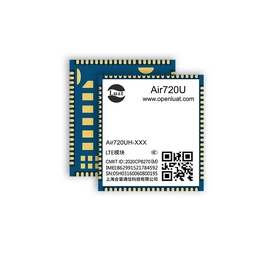Cellular Modules
Results:Cellular Modules Results:
Comprehensive
Price Priority
Stock Priority
Image
Part Number
Manufacturer
Description
Availability
Unit Price
Quantity
Operation

1+ $6.2237
10+ $5.9933
30+ $5.7627
100+ $5.6244
500+ $5.5322
1000+ $5.44
-
+
Ext. Price: $6.22
MOQ: 1
Mult: 1
SPQ: 1

1+ $6.5602
10+ $6.3172
30+ $6.0742
100+ $5.9284
500+ $5.8312
1000+ $5.7341
-
+
Ext. Price: $6.56
MOQ: 1
Mult: 1
SPQ: 1

1+ $5.0463
10+ $4.8594
30+ $4.6725
100+ $4.5604
500+ $4.4856
1000+ $4.4108
-
+
Ext. Price: $5.04
MOQ: 1
Mult: 1
SPQ: 1

1+ $3.2801
10+ $3.1586
30+ $3.0371
100+ $2.9642
500+ $2.9157
1000+ $2.867
-
+
Ext. Price: $3.28
MOQ: 1
Mult: 1
SPQ: 1

1+ $2.7755
10+ $2.6727
30+ $2.5698
100+ $2.5082
500+ $2.4671
1000+ $2.4259
-
+
Ext. Price: $2.77
MOQ: 1
Mult: 1
SPQ: 1

1+ $6.3321
30+ $5.9964
100+ $5.6605
-
+
Ext. Price: $6.33
MOQ: 1
Mult: 1
SPQ: 1

1+ $5.5509
10+ $5.3453
30+ $5.1397
100+ $5.0164
500+ $4.9342
1000+ $4.8519
-
+
Ext. Price: $5.55
MOQ: 1
Mult: 1
SPQ: 1

1+ $7.233
10+ $6.9651
30+ $6.6973
100+ $6.5365
500+ $6.4293
1000+ $6.3222
-
+
Ext. Price: $7.23
MOQ: 1
Mult: 1
SPQ: 1

1+ $7.9058
10+ $7.613
30+ $7.3203
100+ $7.1445
500+ $7.0274
1000+ $6.9103
-
+
Ext. Price: $7.90
MOQ: 1
Mult: 1
SPQ: 1

1+ $3.2801
10+ $3.1586
30+ $3.0371
100+ $2.9642
500+ $2.9157
1000+ $2.867
-
+
Ext. Price: $3.28
MOQ: 1
Mult: 1
SPQ: 1












